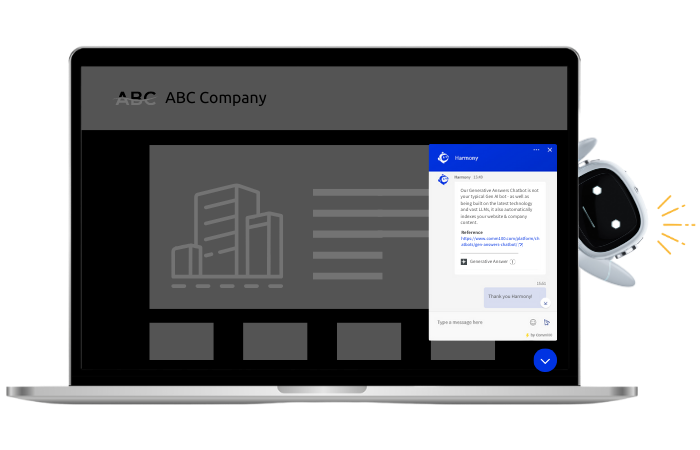Today’s students have grown up as digital natives, surrounded by technology and accustomed to the experience it provides. It should come as no surprise therefore, to hear that higher education institutions are looking to offer a digital-first approach to improve student engagement and experience. The Covid-19 pandemic has pushed the need for digital transformation even further, and its effects are unlikely to abruptly end.
Social media in education is at the core of this movement. Student and schools alike find themselves more active than ever on social media. According to a recent study, 97% of students use social media, with university students being the most active of all. To meet these students online, 98% of schools are now using social media, according to Hootsuite. However, most often, colleges and universities are using social media as a marketing tool to attract new students. While this can be a highly effective enrolment strategy, they are missing out on a key use – as a support channel. Social media in higher education can be used to provide support to students at all stages of the lifecycle.
In this blog, we’ll look at the best practices for using social media as a student support channel in higher education. If you want a more in-depth look into this topic with top tips and tools to improve student experience and engagement, take a look at our new eBook.
Student Social Media Expectations
Learn how your institution can become a truly student-first institution with social media support. Begin your digital transformation journey today!
Get eBook now
Free eBook
1. Quick Responses
While social media platforms evolved as communication tools for friends, families, and social groups, they’ve now grown much larger. With brands and institutions now finding a home on social media, students expect the same response time from these large entities that they receive from friends.
A report by influencer and author Jay Baer found that 32% of consumers expect a response on social media channels within 30 minutes. 57% of consumers even expected the same response time at night and on weekends as during standard business hours. With responses on social media available to the public, social media channels are an opportunity for schools to develop a brand image around the student experience.
2. Digital Omnichannel Support
One of the greatest challenges for schools in providing social media student support is juggling the many platforms available. Social media giants like Facebook and Twitter are just one place that students can seek support. As new platforms gain popularity, supporting them all can spread resources thin and risk incoming requests falling through the cracks.
Thankfully, there are unified platforms providing omnichannel support for these social media accounts in one place. Platforms like Comm100’s omnichannel support connect all these technologies under a single console for the benefit of both students and support agents, improving social media in higher education across the board.
For students, omnichannel platforms provide responsive support that is available to them wherever they are and however they want to connect. For support agents, omnichannel support connects these services in a single place to improve workflow and provide student insights that otherwise wouldn’t be possible.
3. Establishing Service Standards
Research from Sprout Social found that 41% of customers will share a bad social media experience with their network. To avoid this, use an omnichannel support platform to establish high service standards. With integrated ticketing, new social media requests can be flagged for priority and responded to appropriately. When a student reaches out across multiple channels, those tickets are grouped to ensure agents see the full picture without repeating work.
Introducing ticketing also allows institutions to establish service level agreements (SLAs) for response times. With response expectations different across various social platforms, SLAs can be customized by assignment group and platform to ensure that response times match student expectations.
4. Channel Switching
A major reason for the shift to social media for support has been its accessibility over traditional support channels like phone. Phone support can often require calls to be passed from one agent to another – a top frustration among all consumers. Social media student support also often requires moving conversations from a public feed to direct messages too.
Through Comm100’s omnichannel functionality, support agents can follow conversations from one channel or platform to another. Students benefit from a seamless transition from public feed to direct messages, or even new platforms, as they won’t need to repeat themselves to be understood.
5. Chatbot Integration
While live agent responses are the best way to connect with students, it’s not always possible to provide live chat support outside of regular business hours. A chatbot can fill in the gaps in your support, providing 24/7 support. Besides handling common questions, social chatbots can help students book appointments, pay invoices, and more. This immediate response can significantly improve student engagement and remedy many concerns before they become a public grievance on social media.
Comm100 uses a unified AI chatbot, meaning that the chatbot deployed on social media can also be integrated for live chat responses on your website or in-app. With a single chatbot responding across platforms, the chatbot has more opportunity to “learn” which responses are best and provide the best student experience.
Moving Forward
With higher education institutions embracing digital transformation, the importance and the impact of social media in higher education can no longer be overlooked. Younger generations have grown up with the expectation of immediate gratification, and students expect their school to be equally responsive.
As you continue your journey toward digital transformation, the next step is learning more about integrating social channels into your digital support strategy. For a more in-depth look at navigating the complexity of social media student support, we’ve put together an eBook for higher education institutions. You can download below:
Student Social Media Expectations
Learn how your institution can become a truly student-first institution with social media support. Begin your digital transformation journey today!
Get eBook now
Free eBook







